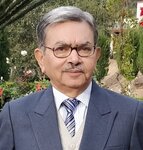Asymptotic Nonoscillations in Fourth Order Retarded Differential Equations
Abstract
Certain physical mechanisms whose performance is related to the past rate of change have lead to the study of differential equations [1]. Mathematical systems representing such mechanisms involve differential equations of retarded type. One example of such a widespread use of these equations is pulse code modulation system in telephone network Smith [8].Downloads
Metrics
Downloads
Published
How to Cite
Issue
Section
License
Copyright (c) 1976 Bhagat Singh

This work is licensed under a Creative Commons Attribution 4.0 International License.
References
BELLMAN R. AND K. COOKE, "Differential-Difference Equations", Academic Press, New York, 1963.
BHATIA, NAM P., Some Oscillation theorems for second order differential equations, J. Math. Anal. Appl. 15 (1966), 442-446.
BRADLEY, JOHN S., Oscillation theorems for second order delay equations, Differential Equations 8, (1970), 397-403.
BURTON T. AND R. GRIMMER, On the asymptotic behavior of solutions of x"(t)+a(t)f(x)=e(t), Pac. J. Math. Vol. 41, No. 1, (1972), 77-88.
ELLIASON, STANLEY B., A Lyapunov inequality for a certain second order nonlinear differential equation, /. London Math. Soc. (2), 2 (1970), 467-472.
HAMMETT, MICHAEL E., Nonoscillation properties of a nonlinear differential equation, Proc. Amer. Math. Soc. Vol. 30, No. 1, (1970).
MINORSKY, N., "Nonlinear Oscillations", van Nostrand, Princeton, NJ, 1962.
SMITH, R.A., Solution estimates for a certain linear delay differential systems, London Math. Soc. (2), 2 (1970), 581-588.
TRAVIS, C. C, Oscillation theorems for second order differential equations with functional arguments, Proc. Amer. Math. Soc, Vol. 31, No. 1, 1972.
 Bhagat Singh
Bhagat Singh

 7
7